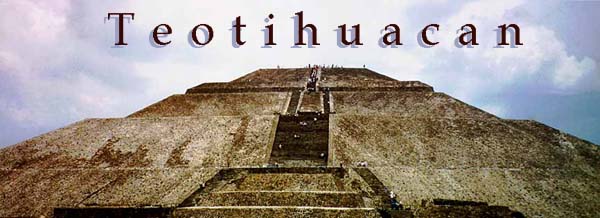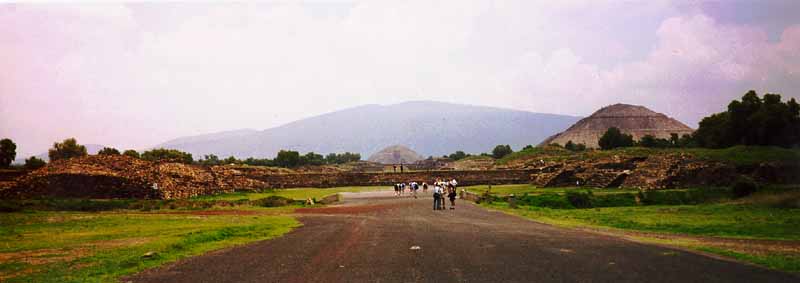 |
Teotihuacan, commonly translated from the Nahuatl as "City of
the Gods", is organized around this central axis, now called the "Avenue of the Dead". It is not exactly a road,
since it is blocked off in many places to create courtyards near monumental
architecture. The name stems from an early rumor that this was where the
Teotihuacanos buried their kings. While most scholars have discarded this
idea due to the lack of burials, others note the possibility that mummy
bundles of ancestors once lined the "Avenue of the Dead". |
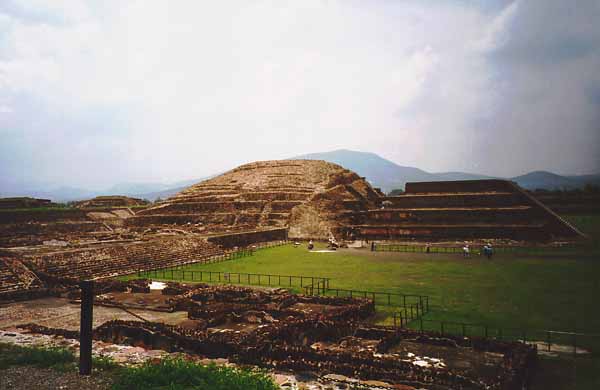 |
The Ciudadela is one of the first architectural
groups encountered when you visit Teotihuacan. Fifteen small pyramids are
arranged symmetrically around the walls of the immense quadrangle. At least
two structures were located near the center of the Ciudadela, one still
exhibiting original paint. Near the back of the Ciudadela, a large pyramidal
structure has been peeled back to uncover the Feathered Serpent Pyramid
(see below). On either side of the Feathered Serpent Pyramid, one can see
the dense apartment-like structures which were probably used as living quarters
by the Teotihuacan elite. |
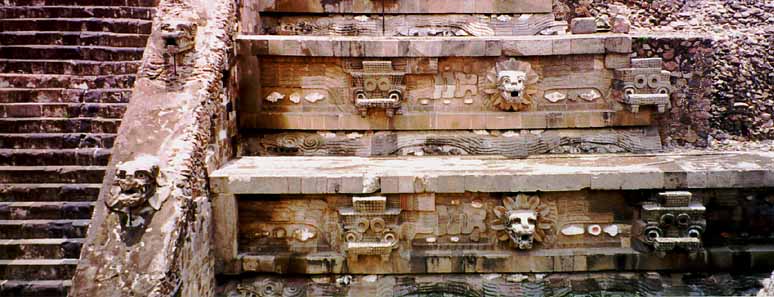 |
The Feathered Serpent Pyramid
is one of the few buildings at this Classic Period city which still retains
its original three dimensional sculpted adornments. The dominant image on
this structure is a feathered serpent carrying a headdress (or some other
head-like burden) on its tail. It is surrounded by water imagery, including
white shells of many different species. The serpent-panels are separated
by profile feathered serpents who undulate through more water imagery. This
façade was ritually terminated when a new construction was built
to cover it. |
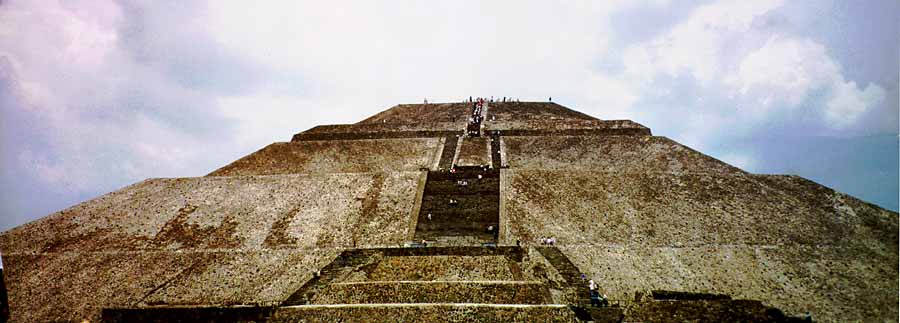 |
The Pyramid of the Sun is the largest stone
pyramid in all of Precolumbian America. It currently measures 738 ft. on
each side and is about 213 ft. tall. However, it was once even larger. The
archaeologist who reconstructed the Pyramid of the Sun around the turn of
the century removed as much as ten meters from the exterior of the North,
South and East façades. The location of this grand structure had
been sacred since the Formative Period, when the earliest layers of the
pyramid were constructed over a natural cave which was used for some time
as a shrine by the Teotihuacanos. |
 |
The Pyramid of the Moon is located at the
Northern terminus of the Avenue of the Dead. Directly in front of its south
façade is a large plaza which is surrounded by structures in a relatively
good state of preservation. To the west of this plaza the beautiful palace
of the Quetzal-Butterfly (Quetzalpapalotl, unfortunately not included in
the Mesoamerican Photo Archives). |
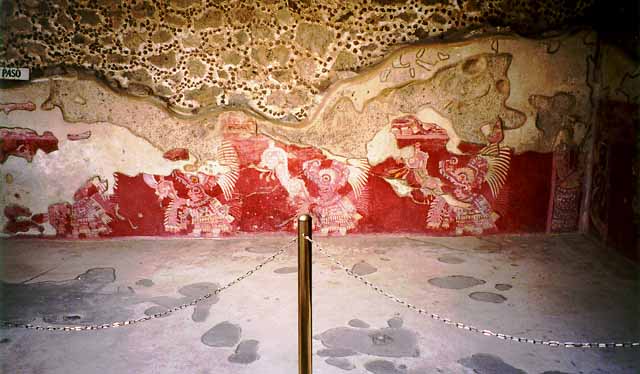 |
If you visit the archaeological zone of Teotihuacan, be sure to walk
or drive along the perimeter road to the Tepantitla
complex. This small patio group contains some of the most famous murals
from Teotihuacan. Click on this photograph to see two of them. |
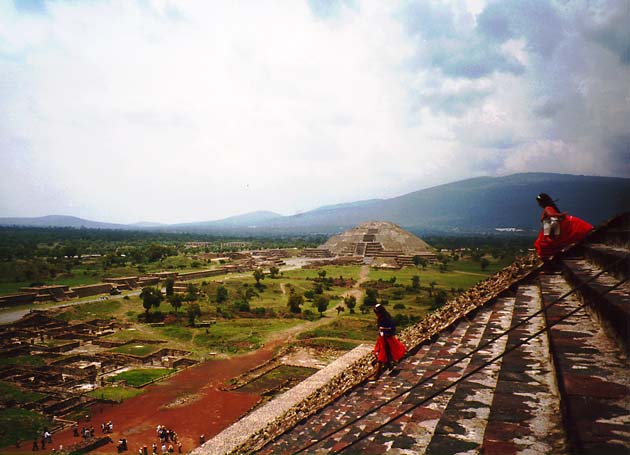 |
This is my favorite photograph from Teo. |
